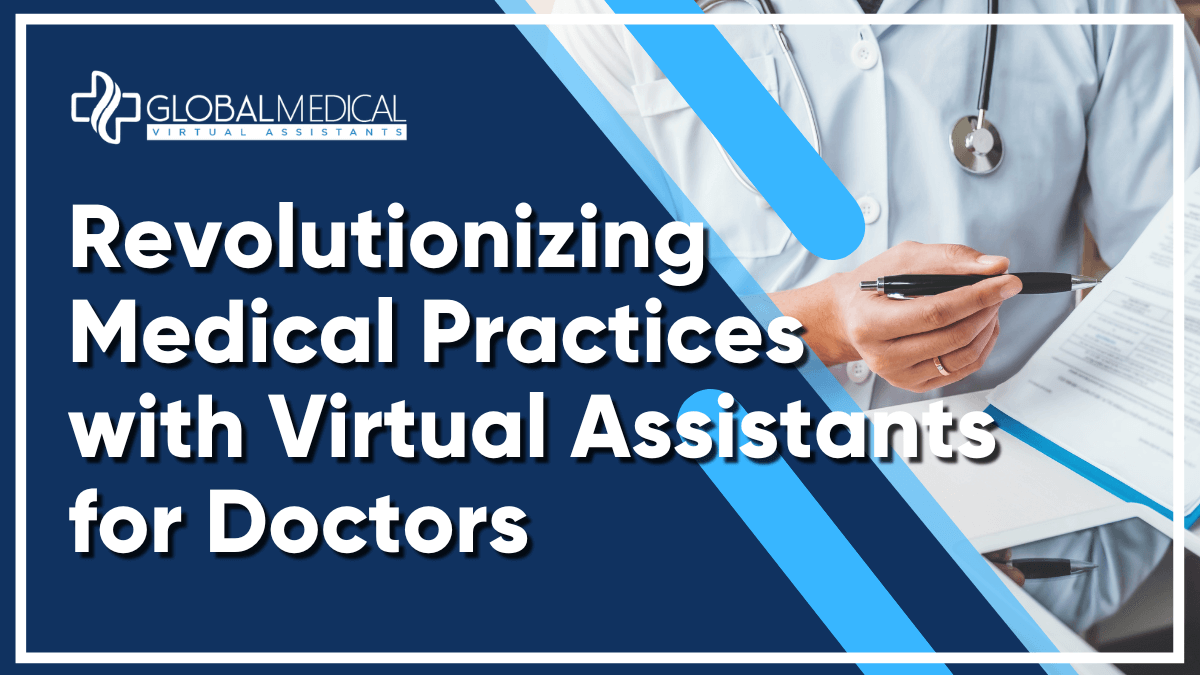Preston Strada
.webp?width=1200&length=1200&name=The%20Role%20of%20Virtual%20Assistants%20in%20Healthcare%20Cost%20Reduction%20(1).webp)
Let’s set the scene: you’re running a busy practice. Your schedule is booked, your staff are juggling patients, procedures, follow-ups, and phone calls. Everything seems to be running smoothly. Then Monday morning hits. The 10 a.m. slot is empty, the 11:30 a.m. patient didn’t show, and every follow-up call went straight to voicemail. Suddenly, time, space, staff cost, and potential revenue have vanished.
No-shows can be a heavy burden. They quietly undermine your schedule, your cash flow, your operational efficiency, and most importantly, your continuity of care. In a field where timing is critical and continuity matters, missed appointments hit hard.
It’s a problem many practices say “we accept it as part of doing business.” But the truth is, you don’t have to accept it. And you certainly shouldn’t ignore it.
Through this article, we’ll explore the persistent challenge of no-shows, bust some misconceptions about why they happen and what to do, show you real data on just how costly this is, and finally illustrate how virtual assistants can help you reduce no-shows, protect your revenue, improve patient care, and relieve your staff.
Common Misconception: “No-Shows Are Just Random and Unavoidable”
One of the biggest myths in medical practice operations is that no-shows are just a kind of inevitable leak you can’t fix. Many providers accept a 5–10 % no-show rate as normal, attributing it to patient forgetfulness, life circumstances, or emergencies. While those factors certainly play a role, treating no-shows as purely random misses two important points:
- According to the American College of Allergy, Asthma, and Immunology (ACAAI), many no-shows are predictable and preventable. For example: patients who book far in advance, who lack a reminder system, whose contact information is outdated, or who don’t feel engaged with the practice. Studies show these contribute significantly to no-show risk.
- A “one size fits all” approach (e.g., sending one reminder call) is often insufficient. Effective prevention often requires multiple touchpoints, tailored outreach, scheduling optimization, and proactive follow-up. As one article puts it: “You’ll never be able to prevent them all … but you can certainly prevent many of them with a comprehensive approach.”
For most medical practices, the blind spot is believing that no-shows are purely random and thus not worth investing operational effort into. That mindset perpetuates inefficiencies, revenue loss, and a suboptimal patient experience. The key shift: Treat no-shows not as random noise, but as operational inefficiencies that you can and should influence.
Why Data and Credibility Matters
Let’s find out what the numbers say and check the findings that support this case:
- According to the Medical Group Management Association (MGMA), the single-specialty aggregate no-show rate in U.S. practices rose to about 6.81 % in 2023, up from about 5.0 % in 2021–22.
- Kyruus Health reports that the cost of no-shows is staggering: one estimate places the annual loss to U.S. healthcare providers at $150 billion due to missed appointments.
- In one large health-system case study conducted by HealthCatalyst, a structured initiative reduced the no-show rate by 28%, translating into over $1 million in additional revenue annually from recovered appointments.
- Strategies shown by Auditdata to reduce no-shows include: automated reminders, reducing the time between booking and appointment, offering self-scheduling options, and personalized outreach to high-risk patients.
- A summary of the two research documents published in Biomed Central and PubMed Central explains that predictive analytics can help identify patients at higher no-show risk, enabling targeted interventions. One study using machine learning frameworks demonstrated this capability.
But what does this data want to tell us?
- No-shows are not trivial, but rather, they’re measurable, significant and controllable.
- Even a modest reduction in no-show rates can meaningfully improve both revenue and patient-care access.
- The operational lever is real: reminders, scheduling, engagement, and data-driven outreach.
How Healthcare Virtual Assistants Fill the Gap
We have to start by defining the common gaps that most practices face:
- Limited staff-time: Front-desk and operations teams are overwhelmed with scheduling, reminders, insurance checks, patient questions. They often have limited bandwidth to execute multi-step outreach or follow-up.
- Inconsistent workflows: Without standard processes for reminders, confirmations, collecting contact information or tracking no-show risk, things slip through the cracks.
- Data-tracking & segmentation: Many practices lack the operational infrastructure to identify which patients are high-risk for no-shows (e.g., new patients, long lead-time bookings, certain demographics).
- Patient engagement: In most cases, building the rapport, checking in and reinforcing the importance of the visit are critical and can be resource-intensive.
So how does your practice go from accepting no-shows as an unavoidable cost to proactively reducing them? Here’s where medical virtual assistants come in.
- Healthcare virtual assistants are trained in healthcare operations: They are remote staff who are trained in appointment-confirmation protocols, patient outreach, multi-channel reminders (phone/text/email), contact-info verification, and follow-up for missed appointments.
- Adapt to specialty-specific workflows: For fertility clinics, they can help manage time-sensitive bookings, cycle coordination, and reminders. For behavioral practices, they support continuity and follow-ups. Lastly, for multi-care/general practices, they handle front-desk heavy lifting so your in-office team can focus on clinical care.
- Has standardized processes for confirming and reducing no-shows: Some companies that provide staffing solutions, such as Global Medical Virtual Assistants, can help implement a repeatable system: capture preferred contacts, schedule reminders, monitor responses, escalate to live assistant when needed, and track no-show data. They can also help in flagging high-risk patients which enable your practice to act proactively before slots go wasted.
- Cost-efficient scalability: Instead of hiring additional full-time on-site staff, you leverage medical virtual assistants as an operations extension that assists in reducing cost, increasing flexibility, and enabling you to allocate staff to higher-value tasks.
- Better patient experience, fewer leaks: When patients receive clear, timely reminders from a consistent team who understands the specialty (and calls in a tone that builds connection), they’re more likely to keep the appointment.
By integrating medical virtual assistants into your practice operations, you move from reactive “we missed another slot” to proactive “we’ve got a system that helps patients show up, keeps our schedule full, and frees our in-office team to focus on care.”
Why This is Important for Your Practice
- Fertility clinics often deal with tightly timed cycles, high patient-expectation, and complex scheduling. A missed slot can delay a cycle, frustrate patients, and incur wasted resources. Virtual assistants assist with reminders, personalized outreach and slot-management make a tangible difference.
- Behavioral health practices depend on continuity and trust. No-shows break that continuity, lower therapeutic momentum, and increase risk of disengagement. Having a support team that reaches out, reinforces the value of follow-up, and seamlessly reschedules patients can support better outcomes.
- Multi-care practices (with multiple specialties under one roof) face complexity: scheduling, referrals, coordinating patient flow. Reducing no-shows frees capacity, improves access, enhances revenue, and strengthens overall operations.
- General practitioners often operate on tight margins and need maximum utilization of appointment slots and time. A structured system for minimizing no-shows translates directly into better access, better revenue, and fewer wasted resources.
The GMVA Difference: Why You Should Partner With Us
- Healthcare-specific training: Our virtual assistants understand medical practice workflows, HIPAA-compliance, scheduling nuances, patient-centric communication and specialty-requirements.
- Scalable, flexible model: Whether you need full-service front-desk support, appointment confirmation, reminder outreach or missed-appointment follow-up, we scale with you.
- Metrics-driven performance: We help you track and reduce your no-show rate, monitor key indicators, and enable continuous improvement.
- Patient-first tone: Our staff engage patients with professionalism, warmth and clarity, reinforcing your practice’s brand and making patients feel seen and supported, which encourages attendance.
- Operational relief for your in-office team: By offloading the confirmations, outreach and follow-ups, your in-house team can focus on high-value care and patient engagement, rather than chasing missed calls or cleaning up scheduling chaos.
- Security-first operations: GMVA is a Security-First company, dedicated to safeguarding patient data and protecting your practice’s PHI. Every virtual assistant operates within the GMVA Secure Work-Zone, a controlled digital environment that locks down devices, prevents screenshots, disables password storage, and restricts access to only the whitelisted systems approved by your practice. This infrastructure ensures that every task is performed in a secure, HIPAA-compliant workspace.
Conclusion
No-shows are more than a nuisance. They are lost revenue, lost capacity, broken continuity of care and frustrated staff. But they’re not inevitable. With the right processes, outreach, technology and staffing support, you can reduce your no-show rate. For every medical practice, operational excellence matters.
A partner like GMVA offers the staffing, workflow design and performance tracking that makes the difference.
Ready to learn how GMVA's Healthcare Virtual Assistants can help your practice reduce no-shows and reclaim lost appointments?
Schedule a call with one of our Strategy Specialists today. Let’s build a smoother schedule, happier patients, and stronger outcomes together!

.webp)



.png)



.png)

